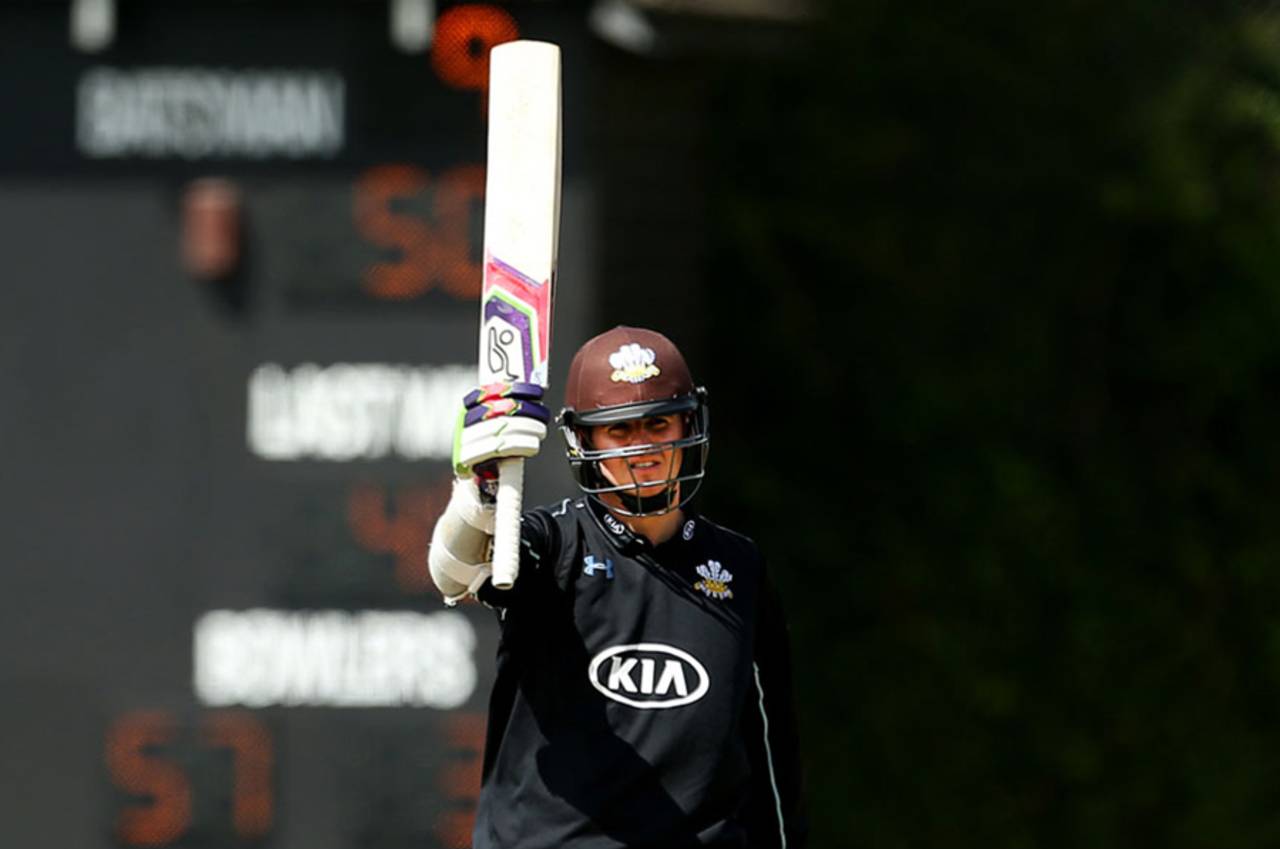Can Australian cricket embrace diversity in all forms?
Ethnic representation is no longer an issue, but attitudes towards gender equality and sexual orientation still have a ways to go
Michael Jeh
06-Mar-2016

Will we see an Australian Steven Davies anytime soon? • PA Photos
"The delicate balance of mentoring someone is not creating someone in your own image but giving them the opportunity to create themselves"
- Steven Spielberg
Australian sport is being asked to look in the mirror and examine their attitudes to inclusion across gender equality and sexual orientation. It is a stilted conversation that many would prefer to avoid, partly because we may fear what we are likely to see in that mirror.
That opportunity will one day lead to equality is an uncomfortable truth that many predominantly male sports find difficult to confront. You only need to look at any junior national cricket carnival to realise that ethnic diversity is no longer an issue now - kids from South Asian backgrounds are more than proportionately represented (although those numbers are yet to migrate into first-class cricket, perhaps because of the premium placed on university education among that diaspora).
Cricket is playing a leading role in breaking down barriers that have for too long been the protectorate of the privileged few. As an education consultant to Cricket Australia, I have recently enjoyed the privilege of working with the cream of junior talent across the country, charged with the responsibility of fostering a culture where the cricket family is a genuinely broad church, open to anyone and everyone with a love for the game. It is a process that has been as educative for me as for the hundreds of elite cricketers who are now being asked to embrace a new dawn that celebrates tolerance and diversity as the modern currency of the Australian cricket family.
The blank looks I get when I first ask 18-year-old cricketers to explain "inclusion" should come as no surprise to a country that has never felt compelled to confront issues like quota systems to fast-track equality. We've never had to worry about quota policies in a formal sense because the concept of a "fair go" is endemic to Australian culture (although it does amuse me when some claim it as an exclusive national trait). But when you ask people to consider inclusion or diversity in more than an ethnic sense, the uncomfortable silence that follows is a sign that in this true democracy, while all men are meant to be equal, some are more equal than others.
On the surface, male cricket is not a place where openly gay cricketers feel comfortable. There is no question that despite accepting the notion of "acceptance" as an egalitarian value, male representative cricket is still a forbidding (and forbidden) place for anyone not seen to be playing with a straight bat, so to speak. The reverse may have been true in female cricket, where there was a perception, outdated now, that if you're straight, you may be the exception in the dressing room. This too has long been a form of subtle discrimination that has denied opportunity to so many female cricketers. At a time when the female World T20 gains wider coverage, has that culture evolved for the better?
Unlike the issue around racial diversity, this imbalance cannot be resolved with a quota-type solution, as applied in countries like South Africa. For those opposed to the system, one only needs to look at Kagiso Rabada, whose emergence has to some degree to do with a policy that may have looked tokenist in the 1990s. It has now unearthed an uncut diamond from the tired mine sites of a once-crumbling Johannesburg. It's all about timing - Rabada was born in 1995, three years after South Africa were admitted back into the cricket family. He grew up in an era where opportunity had to be engineered to some degree, but he is living proof that black diamonds can be unearthed, stolen perhaps from soccer or athletics. Temba Bavuma's breakthrough hundred against England was another joyful moment for those who trod that path before him.
Attitudes are harder to change. There is no quota system that can adequately capture a change of heart when it comes to genuine acceptance of diversity across parameters like sexual orientation. Tennis apart, no sport has adequately dealt with even gender inequality, so it is a much longer road to true acceptance of the LGBTI demographic in sport. In my adult career, even in jest - especially in jest - this was a line in the sand that would have taken enormous courage to cross.
Are we ever likely to see a male Australian cricketer reveal himself as openly gay in the way that Englishman Steven Davies did a few years ago? Cricket Australia is leading the way - their education and mentoring programmes come from a place of sincerity. It is more than lip service. Sometimes it is not being ranked No. 1 that drives increased participation. Increasingly, the reverse may indeed be true.
Michael Jeh is an Oxford Blue who played first-class cricket, and a Playing Member of the MCC. He lives in Brisbane